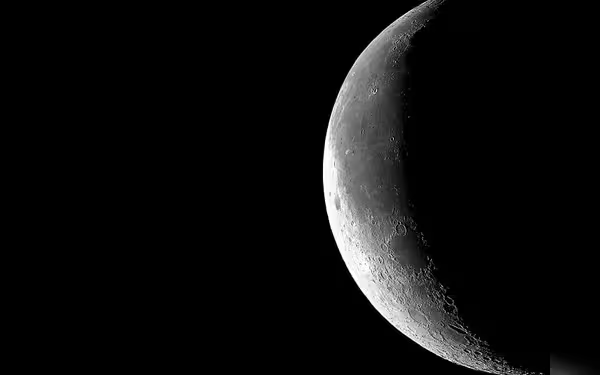Saturday, November 16, 2024 07:38 PM
New Research Challenges Moon Formation Theory
- Giant impact hypothesis faces significant scrutiny.
- Isotopic similarities suggest alternative Moon formation.
- Research may reshape understanding of planetary formation.
 Image Credits: tribune.com.pk
Image Credits: tribune.com.pkNew research led by Paolo Sossi questions the giant impact hypothesis of Moon formation, suggesting a more complex origin.
The formation of the Moon has long been a subject of fascination and debate among scientists. For decades, the prevailing theory, known as the giant impact hypothesis, has suggested that the Moon was created when a Mars-sized object, referred to as Theia, collided with Earth. This catastrophic event is believed to have sent debris into space, which eventually coalesced to form the Moon. However, recent research led by planetary scientist Paolo Sossi has raised significant questions about this widely accepted theory.
In the new study, Sossi and his team examined various geological and chemical evidence that challenges the giant impact hypothesis. They argue that the isotopic similarities between Earth and the Moon suggest a different formation process. If the Moon was indeed formed from debris resulting from a massive impact, one would expect to see more differences in their compositions. Instead, the similarities point to a more complex history that may involve other processes.
This revelation is not just a minor tweak to an existing theory; it could fundamentally change our understanding of how celestial bodies form. The implications of this research extend beyond just the Moon. It invites scientists to reconsider the processes that govern planetary formation in our solar system and beyond. If the giant impact hypothesis is flawed, what does that mean for our understanding of other moons and planets?
As we delve deeper into the mysteries of our universe, it is essential to remain open to new ideas and evidence. Science is a constantly evolving field, and what we accept as fact today may be challenged tomorrow. The study led by Sossi serves as a reminder that our quest for knowledge is ongoing, and each new discovery brings us one step closer to understanding the cosmos.
While the giant impact hypothesis has been a cornerstone of lunar science, the recent findings suggest that we may need to rethink our assumptions. As researchers continue to explore the origins of the Moon, it is crucial for both scientists and enthusiasts alike to stay informed and engaged with these developments. The universe is full of surprises, and who knows what we might uncover next?












